 | « Back to article | Print this article |
'Despite much hype of optimism, everyone went home empty-handed without a clear picture where they are heading in the future,' notes Dr Rajaram Panda.
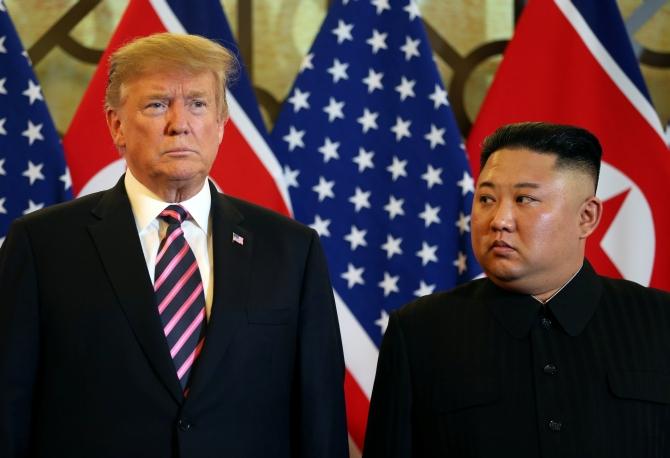
With so much hyperboles and sky-high expectations, the second summit between United States President Donald John Trump and North Korean leader Kim Jong Un in Hanoi on February 27-28, 2019 collapsed with no resolution on the issue of denuclearisation of the Korean peninsula.
It proved to be no different than the first summit between the leaders in June 2018 in Singapore, which was dubbed as historic, but ended with a statement that was vague and unclear and no one knew what that statement meant.
An impetuous Trump with immense diplomatic immaturity was dealing with a dictator nearly 40 years younger with superior maturity. What transpired in the end was that the former became a butt of jokes in the international community for the way in which he conducted diplomacy.
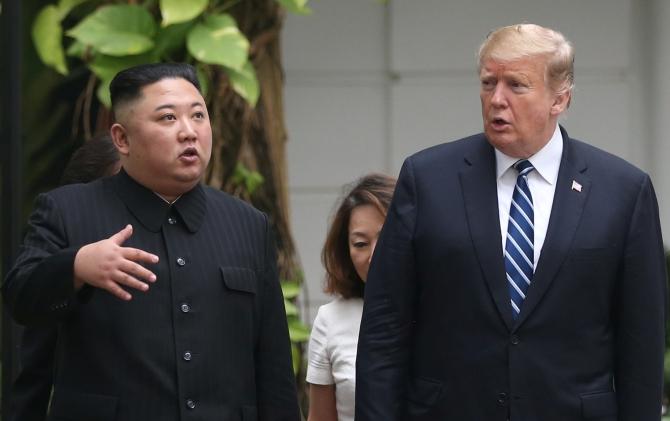
Analysts of the Korean peninsula issue were rather sceptical about the possible outcome.
As it transpired, the differences on what denuclearisation meant remained unresolved with both sides having their own interpretations.
The abrupt end of the summit was because of Kim's insistence of ending all sanctions before the North could talk the denuclearisation issue.
That was not acceptable to Trump. So when the table was set for a celebratory lunch at the landmark Metropole hotel and the ceremony for both leaders to sign agreements getting ready, both events were hastily cancelled just before lunch, bringing a premature end to the second summit.
The sticking point was Kim wanted the sanctions to be lifted in their entirety.
Trump was unwilling, which is why the talks collapsed. Though Kim agreed to dismantle the Yongbyon nuclear complex, complicating the matter was another uranium enrichment site.
This was in addition to Kim promising not to conduct further nuclear and missile tests.
In a sudden midnight media briefing in Hanoi, North Korea's Foreign Minister Ri Yong Ho reiterated that the North's negotiating stance would not change even if the US seeks further talks, which took the matter back to the starting point.
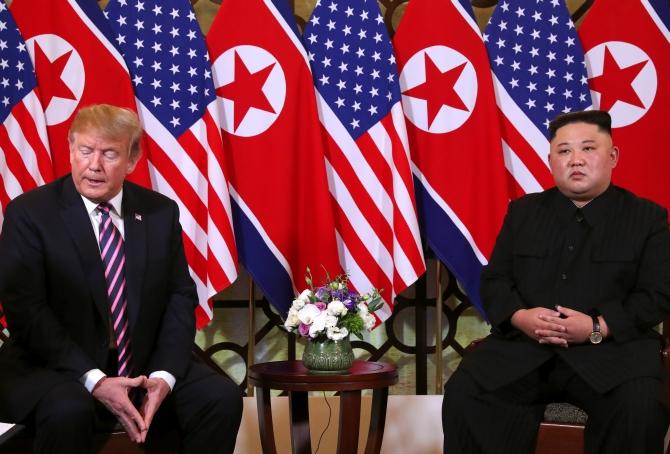
Yongbyon is a complex of graphite-moderated and light-water nuclear reactors plus nuclear reprocessing facilities.
The facility is capable of producing plutonium and highly enriched uranium.
Its dismantlement would have great significance, but there are nuclear facilities in places other than Yongbyon.
Nuclear bombs and ballistic missiles that have already been produced should be included in a list of items subject to dismantlement. That was the US demand.
Notwithstanding such strong signal as articulated by Ri, Trump still claimed the talks to be 'productive' and exulted optimism by saying that both sides shall reach an agreement on denuclearising North Korea.
There was no indication, however, if a third summit shall ever take place.
The two main US allies in the region -- Japan and South Korea -- were dismayed over the summit's outcome.
While South Korean President Moon Jae-in, the main cheerleader for the summit, expressed disappointment, Japan's hawkish Prime Minister Shinzo Abe backed Trump for his decision to make no easy concessions, with the summit ending with no deal.
A key issue for Japan is the fate of several of its citizens kidnapped by North Korean agents.
Despite Tokyo's claim that Trump raised this issue during discussions with Kim, there is no clarity on what exactly transpired as denuclearisation issue was the main bone of contention.
Abe has often repeated his desire to hold his own face-to-face meeting with Kim.
Though Abe has mooted several times the prospect of a summit with Kim to resolve the long-standing abduction issue, neither Tokyo nor Pyongyang has taken any concrete steps towards a summit.
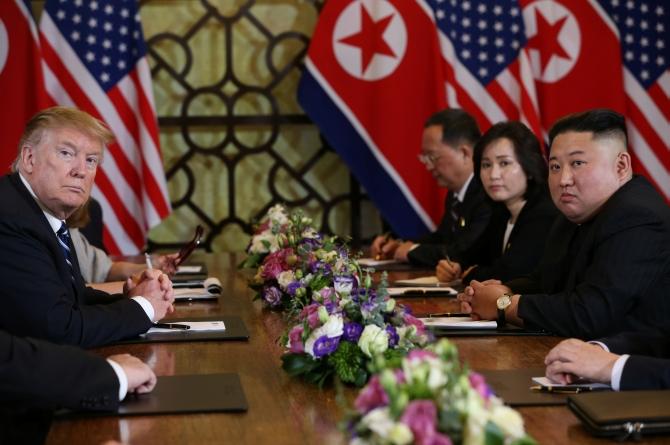
Reactions on the summit outcome from other quarters were varied.
Akira Kawasaki of the International Campaign to Abolish Nuclear Weapons, which was awarded the 2017 Nobel Peace Prize, felt that North Korea could join treaties like the Treaty on the Prohibition of Nuclear Weapons and begin the disarmament process with legitimacy.
Some defended Trump for walking away and said he can now demonstrate that the US is not desperate for any deal whatsoever and that Pyongyang cannot just use the time pressure and media focus in a summit situation as a leverage.
Those who hold such an opinion say that Trump walking away was not such a bad thing.
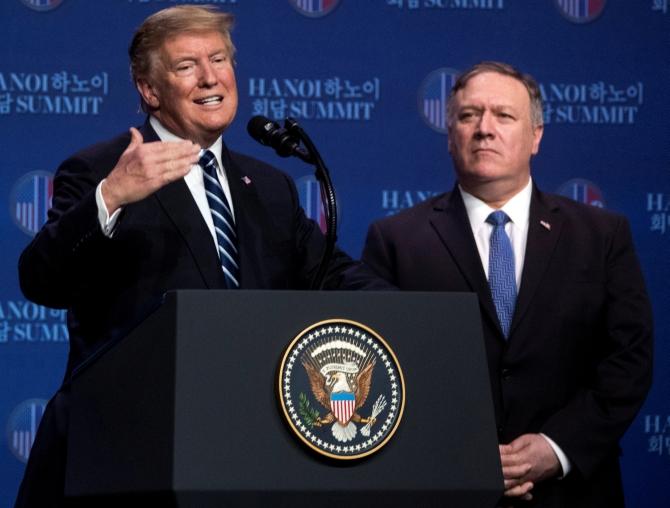
It is possible that Trump was under pressure to extract something beyond the vague commitment that Kim made in Singapore wherein he pledged to give up his nuclear weapons and ballistic missiles in exchange for a lifting of crushing international sanctions.
On his part, Kim probably felt that Trump was desperate for a deal and was going to fold on sanctions relief. Kim also knew that Trump was unpredictable.
Can one give Trump credit that the summit in Singapore and now in Hanoi happened, though with no tangible results, a far cry from the fears of a renewed war with North Korea when Trump threatened to unleash 'fire and fury like the world has never seen' in response to Kim's threats against the US and its allies?
Both Trump and Kim remarked that a possible deal could be negotiated at a future date.
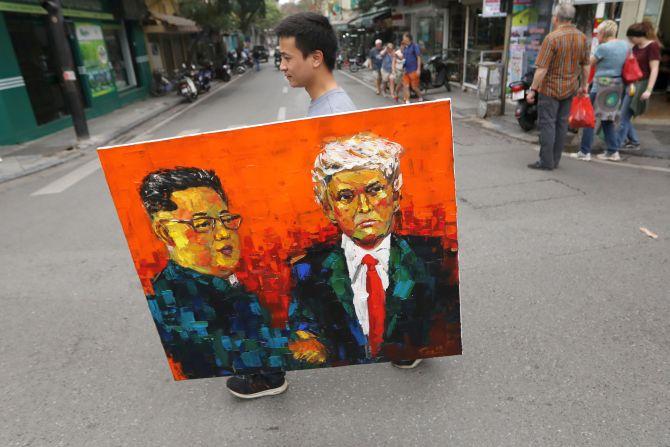
Viewed differently, the summit's collapse reinforced the fundamental choice facing North Korea: Either negotiate with the US or face another nuclear crisis to improve its bargaining position.
With the background of two summits failed, it could be a hard choice for Kim, whether to adopt a hardline approach and risk plunging back to diplomatic isolation before he experienced an unprecedented year of summits and red-carpet receptions.
A shrewd Kim resorted to damage control ensuring the State-media to avoid mentioning any of the acrimony, thereby keeping option open for another summit with Trump.
The Korean Central News Agency reaffirmed the leaders' 'common understanding' to maintain efforts to 'defuse tensions and preserve peace', supporting Trump's claim that Kim pledged not to resume weapons tests.

But the conflicting versions by both sides raise questions about the future of denuclearisation negotiations.
Sceptics interpret the remarks by North Korea's Vice Foreign Minister Choe Son Hui that Kim 'might lose his willingness to pursue a deal' after Trump rejected a partial lifting of sanctions in return for destruction of Yongbyon -- something the North never offered before -- could be the final nail in the coffin of nuclear diplomacy.
Viewed objectively, given the difficult issues as stake, the happening of a second summit itself after the first taking place eight months before in Singapore is in itself a good news.
Yet, a no-deal outcome is certainly bad news, but a return to 'fire and fury' remains unlikely, at least for now.
Seen as a self-styled dealmaker and under pressure at home over his ties with Russia, the failure to reach an agreement in Hanoi is viewed as a setback for Trump in the US.
The collapse of the talks raised questions about his preparations and his cavalier style of personal diplomacy.
Critics said Trump learnt no lesson from his Singapore experience.
However, since the stakes were high, the two avoided another wishy-washy statement like they did in Singapore in June last year.
As it transpired, Trump was found wanting of hard diplomatic work of narrowing differences and exploring options, which is why he could not get away from insurmountable differences.
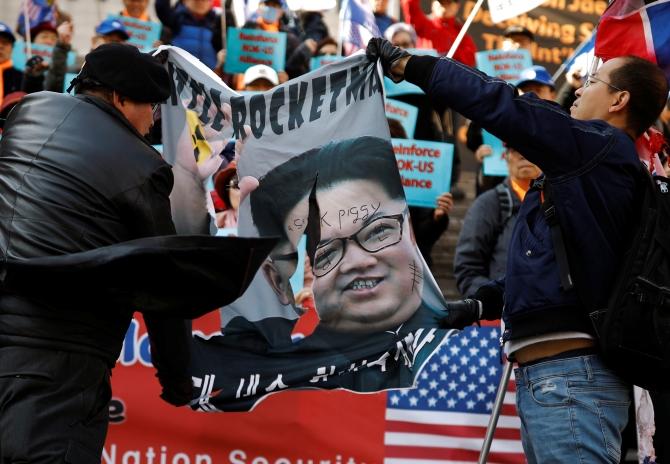
The hard truth is that though North Korea has not conducted any test since late 2017 and Kim has promised not to resume testing, he has reached out to the US for a dialogue for a deal, though yielding no outcome.
Though Kim agreed to dismantle the Yongbyon facility, Trump wanted other facilities to be included in the deal.
It appears that the North Koreans did not know that the Americans knew about other facilities and were therefore surprised.
Trump disregarded US intelligence reports which said that North Korea was unlikely to give up its entire arsenal of nuclear weapons, which Kim's ruling family sees as vital to its survival.
A shrewd Kim expected to extract major concession in the bargain, given Trump's impetuosity.
If not testing ballistic missiles and nuclear bombs, Kim was clearly testing Trump and in the bargain seemed to have emerged as a clear winner.
So what comes next? Now the adversaries have entered a period of deep uncertainty, if not a fresh crisis.
Despite much hype of optimism, everyone went home empty-handed without a clear picture where they are heading in the future.
Diplomacy still remains the best possible option as North Korea has promised not to resume missile testing and the US announced a freeze on joint exercises with South Korea.
Since this goodwill-building proposal of dual suspension by China is in place, the door for the future must not look bleak. But that is a long haul at present.
Dr Rajaram Panda is a Lok Sabha Research Fellow, Parliament of India. The views expressed are personal.